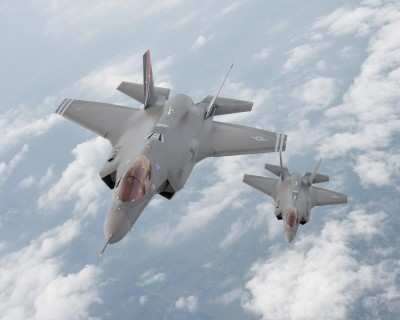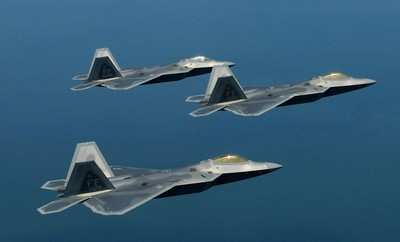Sun, Nov 23, 2014
Heat Generated By Electronic Systems A Growing Challenge
Managing heat that is generated by electronic subsystems in next-generation aircraft is a vexing challenge for aerospace system designers. In the interest of meeting this challenge, the Air Force recently provided follow-on funding for a Small Business Innovation Research (SBIR) effort that is identifying improved methods for heat conduction and rejection from system electronics for advanced fighter aircraft.

To accomplish these goals, the Air Force SBIR/Small Business Technology Transfer (STTR) program office is providing nearly $1.5 million to further mature this technology for the Air Force Research Laboratory (AFRL).
The objective of the SBIR Phase II follow-on contract with ADA Technologies, Inc., located in Littleton, Colorado, is to enhance the technology and manufacturing readiness for nano-enhanced thermal interface material grease and to integrate it with power system modules that are currently used on advanced fighter aircraft.
According to ADA Technologies' principal investigator, Dr. Sayangdev Naha, ADA's thermal grease offers "ultra-low thermal impedance at a fraction of the filler concentration compared to state-of-the-art, which enables this grease to sustain desired performance through severe thermal cycling conditions."
"With further testing, the thermal interface material grease is expected to provide a 10 degrees Celsius or better reduction in junction temperatures," said Dr. James Scofield, the AFRL researcher managing the project. "This reduction in temperature is expected to provide a direct increase in fuel cooling loop temperatures, improved end-of-mission thermal capability during ground idling, and improved reliability and cost savings."

In addition, this program leverages more than $3.95 million in additional AFRL mission funds and the independent research and development funds from the participating companies. These funds will help ensure the Phase II project graduates into a Phase III program that successfully transitions the technologies into military or private sectors.
The Air Force SBIR and STTR programs are mission-oriented programs that integrate the needs and requirements of the Air Force through research and development topics that have military and commercial potential. The SBIR program was established by Congress in 1982 to fund research and development through small businesses of 500 or fewer employees. The STTR program was established in 1992 to fund cooperative research and development projects with small businesses and nonprofit U.S. research institutions, such as universities.
Since 2006, the Commercialization Readiness Program has directly linked Air Force centers to Air Force Research Laboratory technical points of contact to identify and evaluate Air Force needs and innovative solutions. Its primary objective is to accelerate the transition of SBIR/STTR-developed technologies into real-world military and commercial applications.
The Air Force SBIR and STTR programs provide more than $300 million in funding for research and development activities by small businesses annually. With this budget, the Air Force funds research from the early stages of concept development until it transitions to military or commercial use.
(Images from file)
More News
Terminal Radar Service Area Airspace surrounding designated airports wherein ATC provides radar vectoring, sequencing, and separation on a full-time basis for all IFR and participa>[...]
Very High Frequency (VHF) The frequency band between 30 and 300 MHz. Portions of this band, 108 to 118 MHz, are used for certain NAVAIDs; 118 to 136 MHz are used for civil air/grou>[...]
“From approximately November 2021 through January 2022, Britton-Harr, acting on behalf of AeroVanti, entered into lease-purchase agreements for five Piaggio-manufactured airc>[...]
Also: Virtual FLRAA Prototype, IFR-Capable Autonomous A/C, NS-32 Crew, Golden Dome Missile Defense Bombardier announced that the first production Global 8000 successfully completed>[...]
Aero Linx: The 1-26 Association (Schweizer) The Association’s goal is to foster the helpfulness, the camaraderie, and the opportunity for head-to-head competition that is fou>[...]
 ANN's Daily Aero-Term (05.29.25): Terminal Radar Service Area
ANN's Daily Aero-Term (05.29.25): Terminal Radar Service Area ANN's Daily Aero-Term (05.30.25): Very High Frequency (VHF)
ANN's Daily Aero-Term (05.30.25): Very High Frequency (VHF) Aero-News: Quote of the Day (05.30.25)
Aero-News: Quote of the Day (05.30.25) Airborne 05.23.25: Global 8000, Qatar B747 Accepted, Aviation Merit Badge
Airborne 05.23.25: Global 8000, Qatar B747 Accepted, Aviation Merit Badge ANN's Daily Aero-Linx (05.30.25)
ANN's Daily Aero-Linx (05.30.25)




